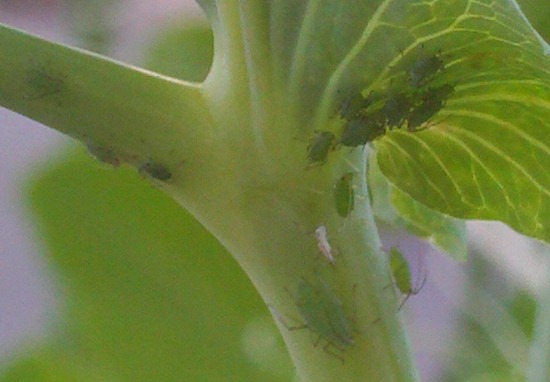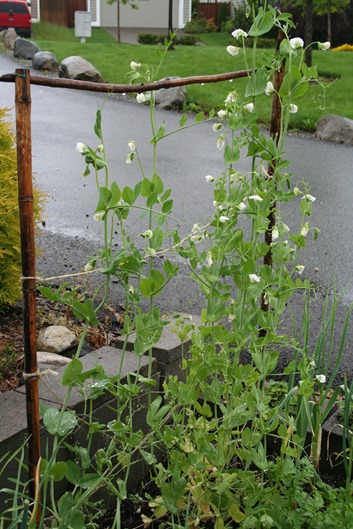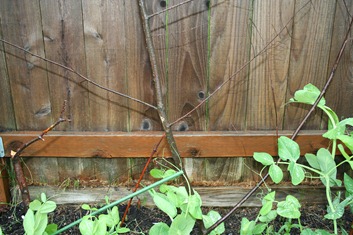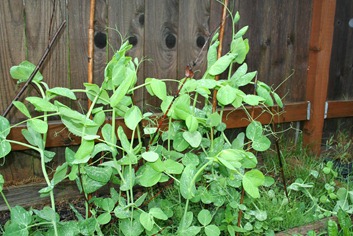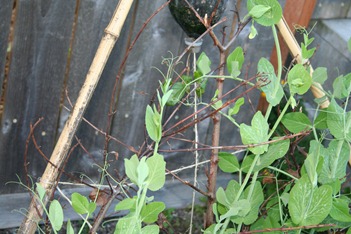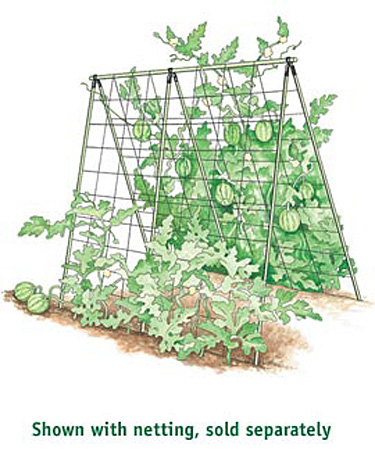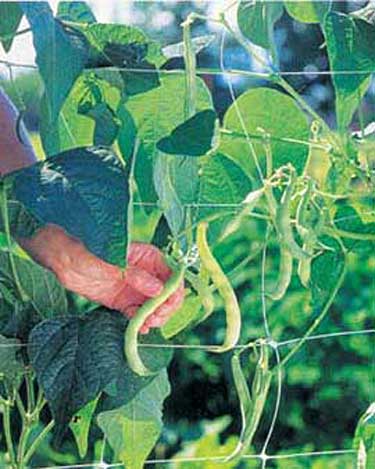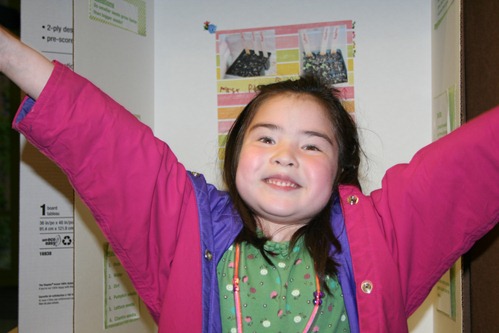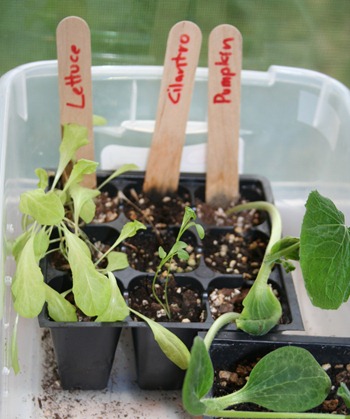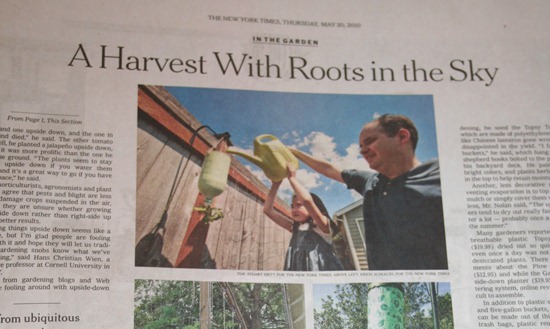Little green bugs on pea plants
13.9 years ago aphids, ladybugs, organic, peas
It is fairly uncommon for me to see these little green bugs on my peas. In case you didn’t guess these are pea aphids, which suck juices from the plant leaves ad spread disease between plants. This is a rare occurrence because normally it is warmer and drier this time of year and we would have our annual ladybug release to take care of these little pests. If the weather holds up we should have good enough weather to do the ladybug release next weekend.
In the meantime I have resorted to to using some organic pesticide solution to deter these pests until the weather gets better. This will not stop the aphids, but hopefully slow the down a little, though when it comes to organic solutions you can not compete with ladybugs which each one can eat up to 5000 aphids/mites in their lifetime. Come next weekend there will be an aphid massacre in the garden. [evil laugh]
Tags: aphids, little green bugs
Building a Pea Garden Trellis
13.9 years ago cheap, fall crops, peas
When building a pea trellis it is actually pretty hard to do it wrong. All that is needed is a little stability and once the plants grab hold they will make the structure even more stable. My typical strategy when making a pea trellis is to use whatever I happen to find closest to me. Here are a few examples from past and current years of building
As you can see when it comes to making your own pea trellis it is very difficult to do it wrong. So do a quick scan around your yard and you should find exactly the materials you need. Though if you want something a little more professional looking there is always the commercial options (click images below for more info) which I would definitely recommend as well.
Tags: cheap, garden trellis
Science Fair – Will smaller seeds sprout faster?
13.9 years ago kids, science fair
This site was practically started because of my oldest daughters science fair project Why Don’t Strawberries Grow in the Wintertime? Now with my youngest in kindergarten she was very excited to have a science fair project of her own, which should be pretty obvious from the picture above.
With no influence from me she decided on answering the question if smaller seeds will sprout faster. These days science fairs are more than just gluing some some Styrofoam balls to a couple hangers and calling it good. They require using true scientific methods and procedures, which is pretty advanced for a 5 year old, although she didn’t seem to notice. Here is the contents of her experiment…
Hypothesis: Smaller seeds will grow bigger in a shorter amount of time because their roots don’t need to grow as big to support the plant
Procedure: I planted 3 seeds of each plant type (lettuce, cilantro, pumpkin) and watered them and gave them sunlight and I watched them grow.
Results: I planted the seeds at the same time and measured the growth over 2 weeks. The lettuce was the first one to sprout. The cilantro was the next one to sprout and the pumpkin was the last one to sprout. At week one, the lettuce was still the largest, cilantro was the second, and the pumpkin was the smallest
Conclusion: Smaller seeds sprouted and grow quicker than larger seeds.
I was very impressed with her project as well as the hypothesis, one of those moments of thinking, “hmm…is that how actually works…” Though you probably can think of a few plants that would break the hypothesis but pretty much on target for most plants.
Interviewed on NPR’s Science Friday
13.9 years ago Uncategorized

Another exciting day this week to be included in an interview on Science Friday with Ira Flatow. I’ll update this post and press page with a link to the interview when it becomes available.
For people who were listening live here are a few of the topics that were discussed for quick reference:
- How to make your own upside Down Planter In your Garden
- The most profitable plants in your vegetable garden
- Using used coffee grounds in your garden/compost
- The Great Sunflower Project [external]
[link to radio interview] [mirror]
Tags: cheap, compost, upside down tomato planter
To invent, you need a good imagination and a pile of junk. – Thomas A. Edison
13.9 years ago Uncategorized
I saw this quote on a project at my daughter’s science fair tonight, this could totally be my tagline for this site…
Featured in The New York Times
13.9 years ago cheap, upside down planter
We were very excited to be featured in The New York Times last Thursday. Welcome to the many new visitors that visiting us this week. If you want to check out the entire article it is available online.
I have been considering creating a press page and figured this was a good opportunity to start a “CVG featured in the press page”
Tags: cheap, tomato plants, vegetables
